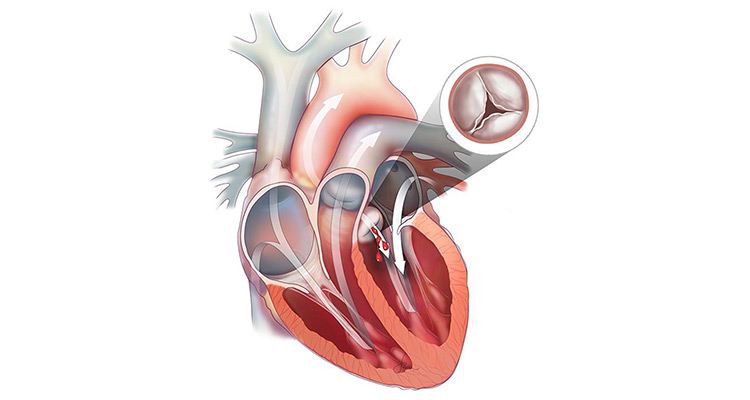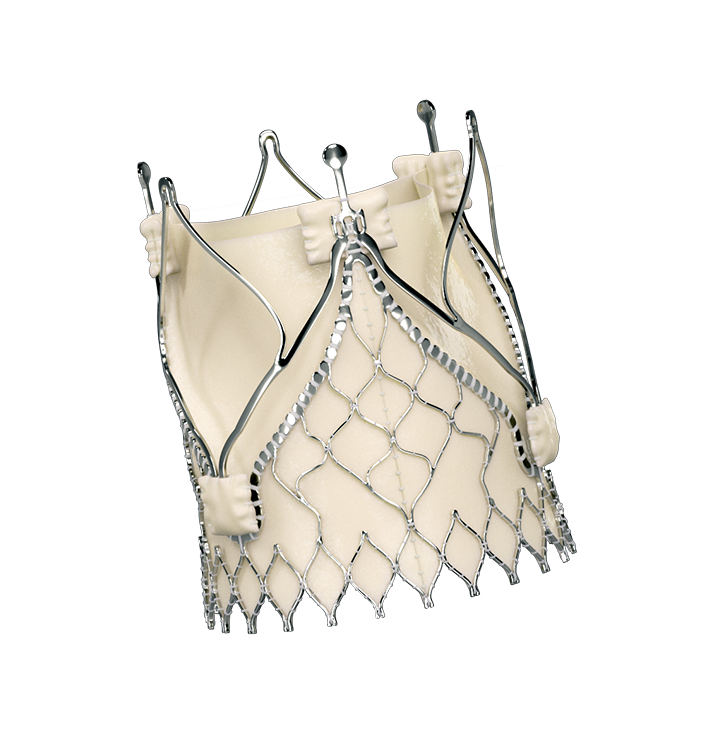
Disclaimer
Please note that the following pages are exclusively reserved for health care professionals in countries with applicable health authority product registrations. To the extent this site contains information, reference guides and databases intended for use by licensed medical professionals, such materials are not intended to offer professional medical advice. Prior to use, please consult device labeling for prescriptive information and operating instructions.
Patients
An aortic regurgitation diagnosis
can feel overwhelming. But there
are options available.

What is aortic regurgitation?

When your heart’s aortic valve fails to fully close, blood pumped from the heart’s main chamber can leak back into the left ventricle. This is aortic regurgitation (AR).
A condition that prevents the heart from effectively pumping blood into the rest of your body, AR has many causes and can develop over the course of decades or suddenly, but once the condition becomes severe, surgery is often a necessary treatment.
Clinical studies have demonstrated that mortality rates are significantly lower in patients who have undergone surgical intervention for severe AR (9% with surgery compared to 24% with no treatment1) in the first year after diagnosis. However, open heart surgery is not always a feasible option for elderly and other high-risk patients. For this reason, JenaValve has made it our mission to develop a non-surgical option to safely treat all AR patients.
What are the treatment options
for severe AR?

Medical
management
While medication may temporarily alleviate some of the symptoms of AR, it does not treat the disease itself or delay the progression of the disease and the need for treatment.

Surgical aortic valve replacement (SAVR)
A surgeon will carefully replace the diseased valve with a prosthetic valve, eliminating the aortic regurgitation. While this is the preferred and recommended treatment for severe AR, not all patients are eligible for surgery.

Transcatheter aortic valve replacement (TAVR)
The TAVR procedure replaces a patient’s aortic valve without requiring open heart surgery. While TAVR is effective for patients with aortic stenosis (AS), it is generally not a good option for patients with AR.2
A transcatheter solution for aortic regurgitation has been impossible—until now

The only TAVR system approved to treat aortic regurgitation*
The Trilogy System makes it possible to safely and effectively treat severe AR with a nonsurgical TAVR procedure. The System is uniquely designed for minimally invasive AR treatment and is the first to be approved for AR treatment in the EU.
Get in touch today to learn more about JenaValve and the Trilogy System
*Indications: The JenaValve Trilogy Heart Valve System is indicated for use in patients with native symptomatic, severe aortic regurgitation (AR) or symptomatic, severe aortic stenosis (AS), who are judged by a Heart Team (including a cardiac surgeon), to be at high or greater risk for surgical aortic valve replacement (AVR), with an STS score ≥ 8% at 30 days, or other comorbidities (e.g., porcelain aorta, frailty, chest wall irradiation) that are not captured by the STS risk calculator.
Contraindications: The JenaValve Trilogy Heart Valve System is contraindicated for use in patients who have known hypersensitivity or contraindication to Nitinol (titanium and/or nickel), an anti-coagulation/anti-platelet regimen or contrast medium that cannot be managed with premedication, or who have active bacterial endocarditis or other active infections.
US: CAUTION – Investigational Device. Limited by Federal (or United States) law to investigational use.
1Thourani et al. Structural Heart 2021; DOI:10.1080/24748706.1988779
2Testa L, et al. EuroIntervention 2014;10:739-745

